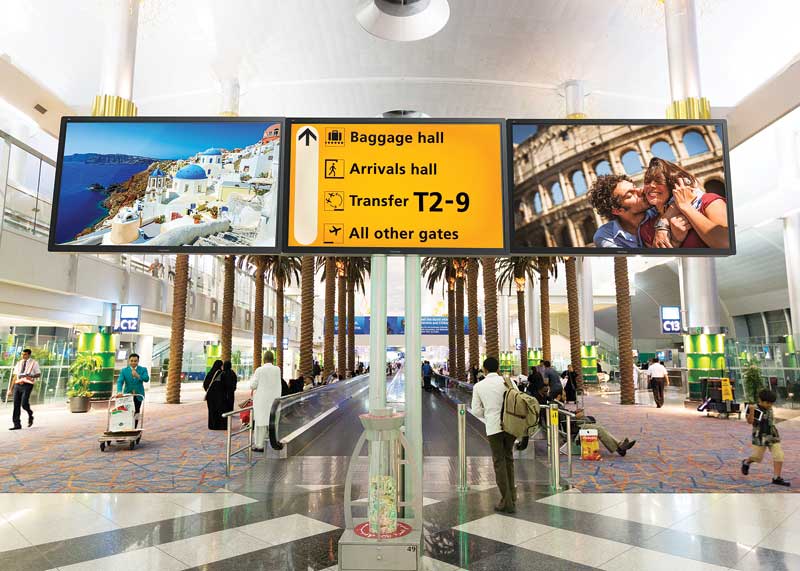
Support for ultra-high-definition (UHD) ‘4K’ content began in airports and other specialized venues before reaching consumers’ homes.
4K content
Ultra-high-definition (UHD) ‘4K’ on-screen content will continue to gain traction, in keeping with the demand for higher-resolution viewing experiences.
Since the earliest days of high-definition (HD) content, continual improvements have been made in image resolution. In the last few years, 4K has inched toward the mainstream for the TV, gaming and commercial markets for large-format displays.
Grand View Research, a business consulting firm, estimates the 4K TV market will be worth nearly US$381 billion by 2025, having experienced a CAGR of 21.2 per cent. And as consumers become accustomed to viewing 4K content in their homes, they will expect the same resolution quality from digital signage.
Whether or not a digital signage network is constantly streaming full 4K content, there is already a push on in the industry to ‘future-proof’ investments in display technology, ensuring they are ready for tomorrow’s video footage. For that matter, even when a UHD screen is not running true 4K content, it will still deliver noticeable improvements in image quality for existing content in a 16:9, 1,080-pixel aspect ratio.
It certainly helps that many of today’s large-format 4K displays do not carry a hefty price premium. (There are expensive exceptions for interactive flat panels and digital projection systems, however, due to their requirement for additional components.)
Stronger security
The rapid growth of the Internet of Things (IoT) has put a spotlight on the risks of hacking associated with connected devices and systems, ranging from surveillance cameras to household appliances. Digital signage can certainly be counted among the technologies at risk, with numerous recent examples of screens hacked to display obscene messages, and enhancing security has become critically important for all formats.
With the plethora of digital signs streaming live content, along with the increased integration of interactivity, back-end information technology (IT) infrastructure security has become a top priority. One of the most important factors to consider is how the vast majority of displays currently deployed in the marketplace are controlled by Google’s Android operating system (OS), which poses security concerns.
Technology vendors are working closely with security-focused partners to find more effective and efficient approaches to data protection and system management. Many are introducing built-in security chipsets that will simplify and strengthen security for digital signage networks in the near future, e.g. with enhanced, customizable system lockdown capabilities.





